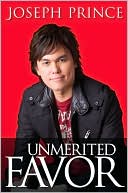The Melody of Faith: Theology in an Orthodox Key
In the Orthodox Christian faith the elements of liturgy, scripture, hymnody, and iconography are the instruments or "voices" of a melody of faith. Here Vigen Guroian presents the fundamental beliefs of Orthodox Christianity through the metaphor of music. Often drawing on his personal religious experience, Guroian weaves together the themes of creation and new creation, beginning and end, sin and holiness, Incarnation and deification, sacrifice and salvation.\ Guroian explores the dogmatic...
Search in google:
In the Orthodox Christian faith the elements of liturgy, scripture, hymnody, and iconography are the instruments or voices of a melody of faith. In The Melody of Faith Vigen Guroian introduces his readers to the fundamental beliefs of Orthodox Christianity using the metaphor of melody. / Often drawing on his personal religious experience for illumination, Guroian weaves together the themes of creation and new creation, beginning and end, sin and holiness, Incarnation and deification, sacrifice and salvation. By discussing several iconography traditions and illuminations from ancient gospels, he illustrates how Orthodox Christianity expresses theology in art as well as through language. / The Melody of Faith is a book that not only reflects the spirit of Orthodox Christianity but that also takes the reader to the theological heart of the Orthodox faith. Publishers Weekly Guroian (Incarnate Love: Essays in Orthodox Ethics), professor of religious studies at the University of Virginia, sets out with a bold mission—to write a series of theological “tonal poems,” each reading more like music than prose. This, he asserts, will not produce a “rational” or “linear” organization, but rather create an aesthetic reading experience in which literary themes will develop into melodic variations and fugues. Hymnody, he asserts, existed before any Christian art and architecture because it integrated the feeling of doctrine along with the thought of theology, creating a richer spiritual understanding. Consequently, the book divides itself into six hymnlike chapters that “sing” the Orthodox theologies of creation, the apocalypse, redemption, the Virgin Mary, the crucifixion, and resurrection. To a large extent, the execution of the book’s mission is successful, particularly the author’s method of separating each chapter into verse-like subsections. Yet the reader may feel lost at times in the complexity of the author’s intent. To fully appreciate the musical style of the prose, one may at times be required to pay less attention to the beauty of the very theologies Guroian wishes to convey. (Feb.)
Acknowledgments ixPreface xi1 The Litany of Creation 12 The Luminous Moment of the Apocalypse 253 Divine Therapy 434 Mother of God, Mother of Holiness 655 The Victorious Cross 936 The Rhythm of the Resurrection 115Notes 137Subject Index 153Scripture Index 156
\ Publishers WeeklyGuroian (Incarnate Love: Essays in Orthodox Ethics), professor of religious studies at the University of Virginia, sets out with a bold mission—to write a series of theological “tonal poems,” each reading more like music than prose. This, he asserts, will not produce a “rational” or “linear” organization, but rather create an aesthetic reading experience in which literary themes will develop into melodic variations and fugues. Hymnody, he asserts, existed before any Christian art and architecture because it integrated the feeling of doctrine along with the thought of theology, creating a richer spiritual understanding. Consequently, the book divides itself into six hymnlike chapters that “sing” the Orthodox theologies of creation, the apocalypse, redemption, the Virgin Mary, the crucifixion, and resurrection. To a large extent, the execution of the book’s mission is successful, particularly the author’s method of separating each chapter into verse-like subsections. Yet the reader may feel lost at times in the complexity of the author’s intent. To fully appreciate the musical style of the prose, one may at times be required to pay less attention to the beauty of the very theologies Guroian wishes to convey. (Feb.)\ \








